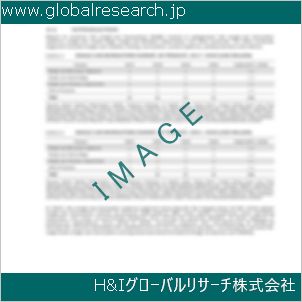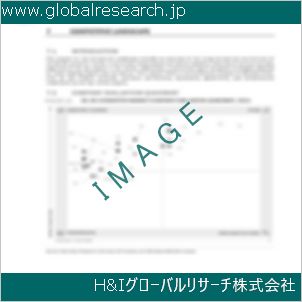Table of Contents
1 Industry Overview of Titanium boride
1.1 Definition and Specifications of Titanium boride
1.1.1 Definition of Titanium boride
1.1.2 Specifications of Titanium boride
1.2 Classification of Titanium boride
1.3 Applications of Titanium boride
1.3.1 Nuclear Application
1.3.2 Non-Nuclear Application
1.4 Industry Chain Structure of Titanium boride
1.5 Industry Overview and Major Regions Status of Titanium boride
1.5.1 Industry Overview of Titanium boride
1.5.2 Global Major Regions Status of Titanium boride
1.6 Industry Policy Analysis of Titanium boride
1.7 Industry News Analysis of Titanium boride
2 Manufacturing Cost Structure Analysis of Titanium boride
2.1 Raw Material Suppliers and Price Analysis of Titanium boride
2.2 Equipment Suppliers and Price Analysis of Titanium boride
2.3 Labor Cost Analysis of Titanium boride
2.4 Other Costs Analysis of Titanium boride
2.5 Manufacturing Cost Structure Analysis of Titanium boride
2.6 Manufacturing Process Analysis of Titanium boride
3 Technical Data and Manufacturing Plants Analysis of Titanium boride
3.1 Capacity and Commercial Production Date of Global Titanium boride Major Manufacturers in 2023
3.2 Manufacturing Plants Distribution of Global Titanium boride Major Manufacturers in 2023
3.3 R&D Status and Technology Source of Global Titanium boride Major Manufacturers in 2023
3.4 Raw Materials Sources Analysis of Global Titanium boride Major Manufacturers in 2023
4 Capacity, Production and Revenue Analysis of Titanium boride by Regions, Types and Manufacturers
4.1 Global Capacity, Production and Revenue of Titanium boride by Regions 2019-2024
4.2 Global and Major Regions Capacity, Production, Revenue and Growth Rate of Titanium boride 2019-2024
4.3 Global Capacity, Production and Revenue of Titanium boride by Types 2019-2024
4.4 Global Capacity, Production and Revenue of Titanium boride by Manufacturers 2019-2024
5 Price, Cost, Gross and Gross Margin Analysis of Titanium boride by Regions, Types and Manufacturers
5.1 Price, Cost, Gross and Gross Margin Analysis of Titanium boride by Regions 2019-2024
5.2 Price, Cost, Gross and Gross Margin Analysis of Titanium boride by Types 2019-2024
5.3 Price, Cost, Gross and Gross Margin Analysis of Titanium boride by Manufacturers 2019-2024
6 Consumption Volume, Consumption Value and Sale Price Analysis of Titanium boride by Regions, Types and Applications
6.1 Global Consumption Volume and Consumption Value of Titanium boride by Regions 2019-2024
6.2 Global and Major Regions Consumption Volume, Consumption Value and Growth Rate of Titanium boride 2019-2024
6.3 Global Consumption Volume and Consumption Value of Titanium boride by Types 2019-2024
6.4 Global Consumption Volume and Consumption Value of Titanium boride by Applications 2019-2024
6.5 Sale Price of Titanium boride by Regions 2019-2024
6.6 Sale Price of Titanium boride by Types 2019-2024
6.7 Sale Price of Titanium boride by Applications 2019-2024
6.8 Market Share Analysis of Titanium boride by Different Sale Price Levels
7 Supply, Import, Export and Consumption Analysis of Titanium boride
7.1 Supply, Consumption and Gap of Titanium boride 2019-2024
7.2 Global Capacity, Production, Price, Cost, Revenue, Supply, Import, Export and Consumption of Titanium boride 2019-2024
7.3 USA Capacity, Production, Price, Cost, Revenue, Supply, Import, Export and Consumption of Titanium boride 2019-2024
7.4 EU Capacity, Production, Price, Cost, Revenue, Supply, Import, Export and Consumption of Titanium boride 2019-2024
7.5 China Capacity, Production, Price, Cost, Revenue, Supply, Import, Export and Consumption of Titanium boride 2019-2024
7.6 Japan Capacity, Production, Price, Cost, Revenue, Supply, Import, Export and Consumption of Titanium boride 2019-2024
8 Major Manufacturers Analysis of Titanium boride
8.1 Manufacturer One
8.1.1 Company Profile
8.1.2 Product Picture and Specifications
8.1.2.1 Type I
8.1.2.2 Type II
8.1.2.3 Type III
8.1.3 Capacity, Production, Price, Cost, Gross and Revenue
8.1.4 Contact Information
8.2 Manufacturer Two
8.2.1 Company Profile
8.2.2 Product Picture and Specifications
8.2.2.1 Type I
8.2.2.2 Type II
8.2.2.3 Type III
8.2.3 Capacity, Production, Price, Cost, Gross and Revenue
8.2.4 Contact Information
8.3 Manufacturer Three
8.3.1 Company Profile
8.3.2 Product Picture and Specifications
8.3.2.1 Type I
8.3.2.2 Type II
8.3.2.3 Type III
8.3.3 Capacity, Production, Price, Cost, Gross and Revenue
8.3.4 Contact Information
8.4 Manufacturer Four
8.4.1 Company Profile
8.4.2 Product Picture and Specifications
8.4.2.1 Type I
8.4.2.2 Type II
8.4.2.3 Type III
8.4.3 Capacity, Production, Price, Cost, Gross and Revenue
8.4.4 Contact Information
8.5 Manufacturer Five
8.5.1 Company Profile
8.5.2 Product Picture and Specifications
8.5.2.1 Type I
8.5.2.2 Type II
8.5.2.3 Type III
8.5.3 Capacity, Production, Price, Cost, Gross and Revenue
8.5.4 Contact Information
…
9 Marketing Trader or Distributor Analysis of Titanium boride
9.1 Marketing Channels Status of Titanium boride
9.2 Traders or Distributors with Contact Information of Titanium boride by Regions
9.3 Ex-work Price, Channel Price and End Buyer Price Analysis of Titanium boride
9.4 Regional Import, Export and Trade Analysis of Titanium boride
10 Industry Chain Analysis of Titanium boride
10.1 Upstream Major Raw Materials Suppliers Analysis of Titanium boride
10.1.1 Major Raw Materials Suppliers with Contact Information Analysis of Titanium boride
10.1.2 Major Raw Materials Suppliers with Supply Volume Analysis of Titanium boride by Regions
10.2 Upstream Major Equipment Suppliers Analysis of Titanium boride
10.2.1 Major Equipment Suppliers with Contact Information Analysis of Titanium boride
10.2.2 Major Equipment Suppliers with Product Pictures Analysis of Titanium boride by Regions
10.3 Downstream Major Consumers Analysis of Titanium boride
10.3.1 Major Consumers with Contact Information Analysis of Titanium boride
10.3.2 Major Consumers with Consumption Volume Analysis of Titanium boride by Regions
10.4 Supply Chain Relationship Analysis of Titanium boride
11 Development Trend of Analysis of Titanium boride
11.1 Capacity, Production and Revenue Forecast of Titanium boride by Regions and Types
11.1.1 Global Capacity, Production and Revenue of Titanium boride by Regions 2024-2029
11.1.2 Global and Major Regions Capacity, Production, Revenue and Growth Rate of Titanium boride 2024-2029
11.1.3 Global Capacity, Production and Revenue of Titanium boride by Types 2024-2029
11.2 Consumption Volume and Consumption Value Forecast of Titanium boride by Regions, Types and Applications
11.2.1 Global Consumption Volume and Consumption Value of Titanium boride by Regions 2024-2029
11.2.2 Global and Major Regions Consumption Volume, Consumption Value and Growth Rate of Titanium boride 2024-2029
11.2.3 Global Consumption Volume and Consumption Value of Titanium boride by Types 2024-2029
11.2.4 Global Consumption Volume and Consumption Value of Titanium boride by Applications 2024-2029
11.3 Supply, Import, Export and Consumption Forecast of Titanium boride
11.3.1 Supply, Consumption and Gap of Titanium boride 2024-2029
11.3.2 Global Capacity, Production, Price, Cost, Revenue, Supply, Import, Export and Consumption of Titanium boride 2024-2029
11.3.3 USA Capacity, Production, Price, Cost, Revenue, Supply, Import, Export and Consumption of Titanium boride 2024-2029
11.3.4 EU Capacity, Production, Price, Cost, Revenue, Supply, Import, Export and Consumption of Titanium boride 2024-2029
11.3.5 China Capacity, Production, Price, Cost, Revenue, Supply, Import, Export and Consumption of Titanium boride 2024-2029
11.3.6 Japan Capacity, Production, Price, Cost, Revenue, Supply, Import, Export and Consumption of Titanium boride 2024-2029
12 New Project Investment Feasibility Analysis of Titanium boride
12.1 New Project SWOT Analysis of Titanium boride
12.2 New Project Investment Feasibility Analysis of Titanium boride
13 Conclusion of the Global Titanium boride (CAS 12045-63-5) Industry 2024 Market Research Report
| ※参考情報 ホウ化チタン(TiB)は、金属ホウ素と金属チタンからなる化合物であり、化学式はTiBで示されます。CAS番号は12045-63-5です。この物質は、非常に高い硬度と耐熱性を持つため、さまざまな工業用途で利用されています。ここでは、ホウ化チタンの定義、特徴、種類、用途、関連技術について詳しく説明いたします。 ホウ化チタンの定義は、その名の通り、ホウ素とチタンが結びついた化合物です。この化合物は、金属的な特性を持ちながらも、セラミックに近い特性を併せ持っています。ホウ化チタンは、硬い物質の中では特に高い硬度を有し、そのために金属加工や摩耗に対して優れた耐性を示します。 ホウ化チタンの特徴は、いくつかの点にあります。まず第一に、その硬度です。モース硬度は約9となっており、ダイヤモンドに近い硬度を持つため、金属やセラミックの加工工具として非常に効果的です。次に、ホウ化チタンは耐熱性にも優れ、摂氏3000度以上の高温環境でも安定性を保つことができます。このため、高温での作業や過酷な環境下でも使用できるため、航空宇宙産業や冶金などの分野で重宝されています。 ホウ化チタンにはいくつかの種類があり、それぞれ異なる特性を持っています。主に、TiBとTiB2(ホウ化チタンII)という二つの主要な形態が存在します。TiB2の方がより高い硬度と保護性能を持ち、そのため主に耐摩耗性や耐腐食性を必要とする用途に使用されます。また、TiB2は電気的導電性を示すため、電子機器の部品やセンサー材料としても利用されています。 ホウ化チタンの用途は非常に広範囲にわたります。まず、金属加工での工具素材としての利用が挙げられます。ホウ化チタンは切削工具や摩擦面、耐磨耗材料として使用されることが多く、特に鋼やアルミニウムの加工で効果を発揮します。また、ホウ化チタンは耐熱材料としても優れており、航空宇宙産業やエネルギー産業において発電用タービンの部品やエンジン部品に応用されます。さらに、セラミックや複合材料の添加剤として使用されることもあります。 ホウ化チタンの関連技術も非常に重要です。製造プロセスとしては、主に高温での焼結法や化学気相成長(CVD)法が用いられています。これにより高純度かつ均一なホウ化チタン粉末を作成することが可能となります。また、ナノテクノロジーの分野でも、ホウ化チタンを用いたナノ材料の開発が進められており、これにより新しい機能性材料としての応用が期待されています。 さらに、ホウ化チタンは電子材料としても重要です。その電気的特性を活かし、半導体製造やセンサーデバイスにおいても利用されています。ホウ化チタンはその高い硬度と同時に適度な導電性を持っているため、ストレージデバイスやトランジスタの製造においても使用されることがあります。 ホウ化チタンの安全性に関しても考慮が必要です。一般的に、ホウ化チタン自体は高い安定性を持っているものの、取り扱いや粉末状のホウ化チタンを扱う際には、吸入や接触による健康への影響を避けるために適切な安全対策が求められます。ダストや粉末が生成される工程では呼吸器保護具を着用し、作業環境の換気を十分に行うことが推奨されます。 結論として、ホウ化チタンはその優れた物理的特性から多くの工業用途に利用されており、今後もさらなる応用が期待される素材です。特に、耐熱性や高硬度を求める分野ではなくてはならない存在であり、研究開発や新しい製造技術の進展に伴い、さらなる市場での利用が広がっていくことでしょう。科学技術の進歩とともに、ホウ化チタンの利用範囲は拡大し続け、我々の生活や産業において重要な役割を果たしていくと考えられます。 |
❖ 免責事項 ❖
http://www.globalresearch.jp/disclaimer












